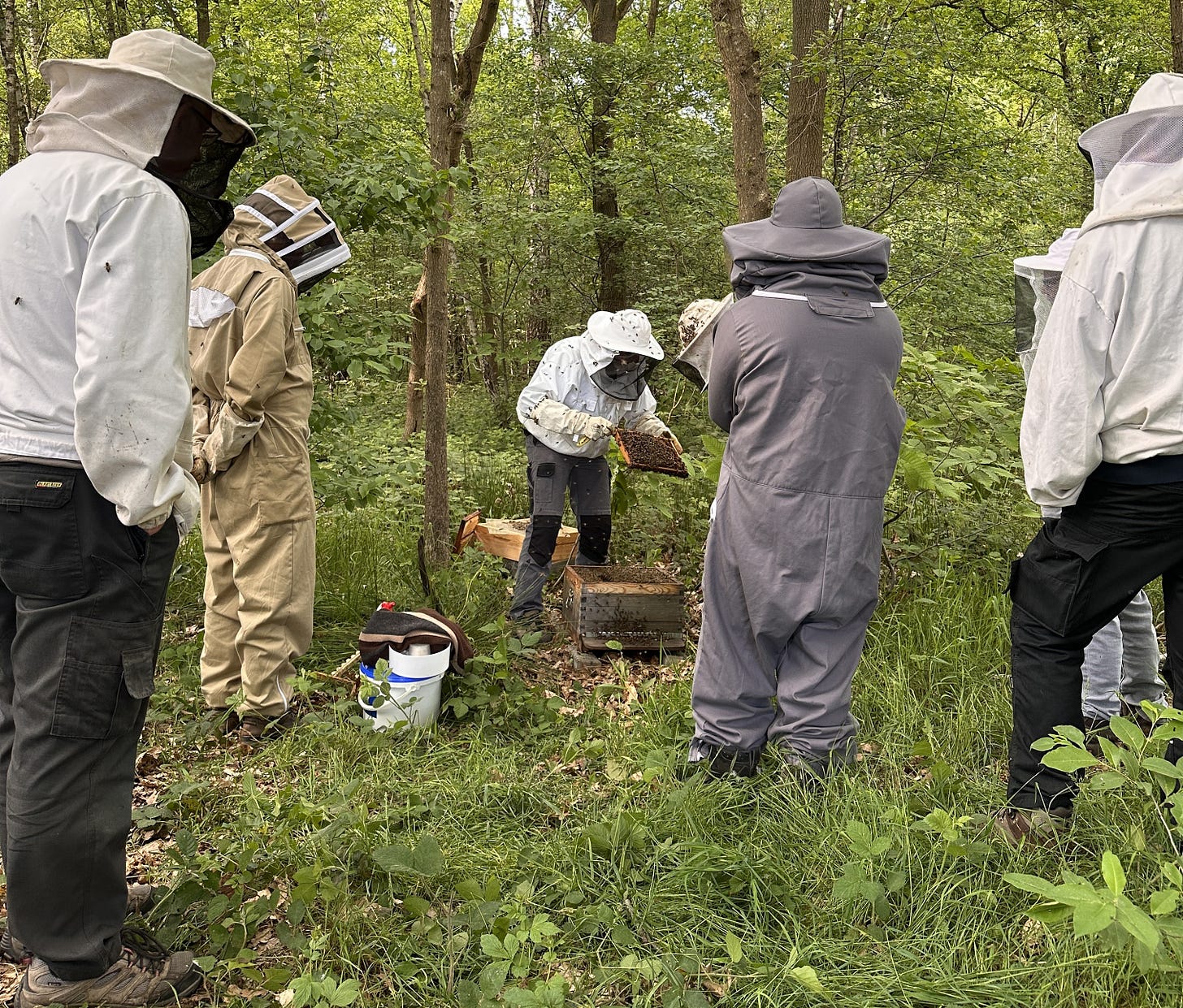Beekeepers love improvising equipment. I’ve seen some stunningly clever stuff in my time.
Everyone has their own ways and means. And I was about to see some extremely distasteful but fascinating ways to build queen bees.
Or, rather, to entice the bees into building new queens.
I was getting all metaphorical about the idea of building a queen, thinking about those huge elaborate dresses that women in history might have had to need help to climb in and out of. I’m the queen, in the dress-tent-womb.
But really, it’s much simpler than that. I signed up for a lesson series on breeding queens. No fancy dresses required.
The fact that I’ve learned a lot of the things I write about through my second language, Flemish Dutch, results in beekeeping, driving, and weaving all occupying a special slot in my mind, where I only know the words for the movements or equipment in that other language.
I was nervous. I always am, when I meet people first. In front of groups, I’m scared to speak. But how else can you actually learn from a lesson if you sit there misunderstanding one concept and never being able to grasp back at it again? Once I stammer out a phrase or two, out it comes.
I came into this class knowing that queen breeding was kind of an esoteric art, and that it required patience and a steady hand, but honestly, I didn’t really know anything beyond that.
Why do it at all? Like any kind of breeding program, you’re looking to produce queens that have certain temperaments, or are good layers. This is how we ended up with different kinds of honeybees - Buckfast bees, for example, is just one race. There’s a huge interest, obviously, in breeding varroa-resistant queens and bees, but so far, there’s been nothing definitive.
The famous royal jelly:
Anyway. The course is currently taking place in a forest about half an hour from my house (currently still going on). I lost my way and had to loop back because the track into it was so understated that I missed it.
Slamming the car door closed sounded hushed.
I followed the smell of bees, and about a minute off the well-worn hiking trail it opened into a clearing that was neatly organised with green polystyrene beehives. We’d had the option to bring a hive ourselves so everyone could work through it as a group, or to just watch and learn, which is what I was there to do.
I love these ways, old equipment, beekeepers who’ve been doing this since before I was born. The teacher was using a bird wing as a bee brush. I’d seen this before, with other people, and figured it was another form of improvisation. Belgium is the home of pigeon fancying, and waste not, want not, right? (I myself have a shop bought brush, thanks.)
The way you build queens is:
grafting one-day-old larvae from a hive with good genes into another special breeding frame.
This frame features specially elongated cells called ‘queen cups’. You source these ‘cups’ in your own hives, cut out any current larvae growing in there, and place them on the special frame. You’ll find them here and there, especially when a hive is preparing to swarm and a new queen is necessary. May is ideal for this, then.
The breeding frame is then put into a queenless colony. The worker bees automatically start grooming and supporting the larvae, building a future queen, in order to fill the power vacuum in the hive.
How many queens do you end up with? About 15 per hive, max. What happens then? Stay tuned for the thrilling continuation!
Grafting is done with a special tool, and we’ve reached the point for this video of our teacher grafting larvae from a frame into queen cups. He insists that the saliva on the tool helps him scoop out larvae, and that he loves the taste of royal jelly. Absolute mad respect for this man, he’s so steady and fast.
Here’s the video (I couldn’t upload it in this actual email for some reason! Sound on if you want to hear what Flemish Dutch sounds like.
I left the smell of honey and wax, the furious activity, and got back into my car, and drove home.
Next time I definitely needed to bring my suit tho.



You’ve made me want to go and learn all about beekeeping in person! I’ve always been fascinated. I wonder if there’s anything local to me.